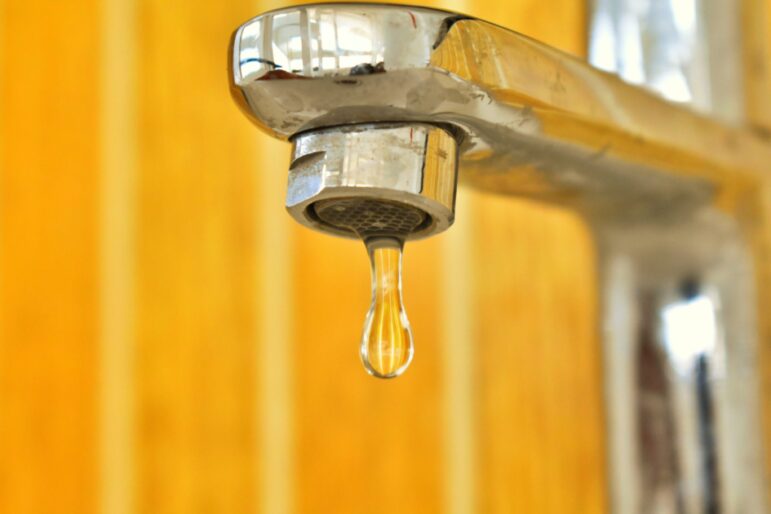According to The Canadian Drought Monitor, droughts are a “creeping phenomenon.” They are “difficult to define and measure, slow to develop, continuous, cumulative, and long-lasting. [Further] there is no universally applicable tool for measuring drought; as impacts are non-structural, spread over large areas, and best described by multiple indices.”
According to the Monitor, even though some northern areas of Canada are not analyzed, at least 40 percent of Canada is currently experiencing abnormally to exceptionally high drought conditions. For facility managers in these provinces, practicing and instituting water conservation and efficiency measures to reduce consumption is a must.
While these terms – efficiency and conservation – are often used interchangeably, they are undoubtedly different. Knowing the difference between these terms will help facility managers reduce water consumption, lower costs, and help minimize the impact of water-related costs in the future.
How are efficiency and conservation different? Amy Vickers, president of Amy Vickers & Associates, a water-related consulting firm in the U.S. defines water conservation simply as a “beneficial reduction in water loss, waste, or use.”
Typically, this means putting policies, programs, and practices in place to change consumer behavior so that they use only as much water as needed. Little things like waiting until the dishwasher is full before running a load, turning off the water when shaving or brushing teeth, and reducing the number of times outdoor vegetation is irrigated can all be applied here.
It should be noted that water conservation is often short-term. When an area of Canada is impacted by drought, government officials may ask consumers to voluntarily reduce water consumption, or they may impose water restrictions. But once the drought is lifted, so are the restrictions, and these water conservation measures evaporate.
Water efficiency is different. Vickers defines it as “The minimization of the amount of water used to accomplish a function, task, or result.”
This means doing more with less, over the long-term. Vickers adds, “Water efficiency usually relies on well-engineered products and fixtures such as low-flow toilets or waterless urinals or HVAC systems designed to use less water.”
In many commercial buildings today, HVAC systems draw more water for cooling and heating, often accounting for nearly half the facility’s total water consumption.
For even more clarity, let’s put them into practice in different situations.
Outdoor irrigation:
Conservation. During a drought, water conservation would mean irrigating every other day, on specific days of the week, or watering at night or during cooler times of the day to reduce evaporation and maximize your efforts.
Efficiency. Introducing drip irrigation systems or monitoring technologies can reduce water consumption in the long term. In Canada, xeriscaping – switching to native vegetation – is often an effective long-term water reduction strategy.
Restrooms:
Conservation. Reducing the amount of times we flush is something that needs to be considered. Many of us still flush the toilet unnecessarily, for instance, when disposing of facial tissue. That is considered a wasteful use of water and should be kept to a minimum.
Efficiency. Technology is on our side when it comes to restroom water efficiency. Once using about 7.8 to 11 litres of water per flush, most toilets now use about 6 litres. Low-flow faucets are also commonplace throughout Canada today.
Sewer charges:
Conservation. Unfortunately, in some parts of Canada, water and sewer charges are still based on a flat rate, so there is little or no incentive for consumers to reduce consumption in that situation.
Efficiency. Most studies indicate that when water is charged based on the amount consumed – referred to as metered rates – consumers, businesses, and commercial facilities tend to use less water.
Metering:
Conservation. Awareness of how much water a facility uses is one of the most important first steps in water conservation. This means learning how to read water meters. Usually, it involves having someone check the meter about every two weeks. A spreadsheet should be created to record these measurements and to use as a benchmark. This is also a good diagnostic tool for leaks. For example, should water consumption unexpectedly jump, that could indicate a serious leak needs to be investigated.
Efficiency. Submetering can be done to take this one step further. When several water meters are installed, we can benchmark how much water is typically consumed in each area of a facility. This allows control and information about specific areas of the building, and should there be an unexpected spike, it is much easier to determine where the problem is and to address it.
For facility and maintenance managers, it is important to read their monthly water utility bills. All too often, these go to an accounting department, are paid, and that’s the end of them. Reviewing each bill helps us monitor and measure, and we need monitoring and measuring to reduce water consumption, short or long-term.
Knowing the difference between conservation and efficiency is how maintenance managers will mitigate the effects of drought, reduce water consumption, and lower water-related costs for the future of their buildings.
Klaus Reichardt is CEO and founder of Waterless Co, Inc, pioneers in advancing water efficiency. Reichardt founded the company in 1991 with the goal of establishing a new market segment in the plumbing fixture industry with water efficiency in mind. Reichardt is a frequent writer and presenter, discussing water conservation issues. He can be reached at klaus@waterless.com.








